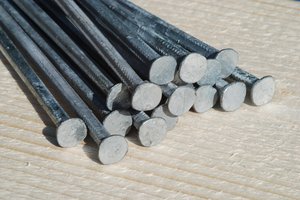Nail guns are used on construction sites across the county on a daily basis. Many workers hardly think twice before using time. They help to increase productivity, but they also cause tens of thousands of serious injuries each and every year, according to the Occupational Safety and Health Administration (OSHA).

It’s so bad one study determined 2 out of every 5 residential carpenter apprentices experience a nail gun injury at least once in a 4-year period. Unfortunately, we may never know the severity of these injuries as they’re oftentimes not treated and not reported properly.
Our workplace injury attorneys note common causes of nail gun injuries are well known and there are six practical steps that contractors can take to prevent these injuries. These include use of full sequential trigger nail guns, provide training, establish nail gun work procedures, provide personal protective equipment (PPE), encourage reporting and discussion of injuries and close calls, and provide first aid and medical treatment. These steps are simple and take very little time, but they can mean a world of difference in helping to protect your workforce.
According to the Centers for Disease Control and Prevention (CDC), hospital emergency departments treated 26,900 workers for nail gun-related injuries in 2005.
How these accidents happen:
-unintended nail discharge from double fire.
-Accidental nail discharge from knocking the safety contact with the trigger squeezed.
-Nail penetration through lumber work piece.
-Nail ricochet after striking a hard surface.
-Missing the target.
-Awkward position nailing.
-Neglecting to use the proper safety mechanisms.
To help to reduce the risks of these accidents, officials with OSHA recommend:
-Always follow the manufacturer’s instructions when using.
-Make sure that the tools you’re using meet OSHA’s guarding rules.
-When using a gun, make sure you’re wearing the proper safety glasses.
-Never try to alter or modify the safety features of the gun.
-Keep your fingers away from the trigger when you’re not intending to fire the gun.
-Only use a nail gun if you have received proper training and instruction from supervisors or more experienced workers.
-Never rest the gun against any part of your body, or try to climb a ladder with the gun cradled against your body.
-Consider using a sequential gun that requires both the trigger and the nose of the gun to be depressed before firing.
-Always disconnect the gun before performing maintenance, moving to another work area or clearing jams.
More than half of reported nail gun injuries are to the hand and fingers. One quarter of these hand injuries involve structural damage to tendons, joints, nerves, and bones. After hands, the next most often injured are the leg, knee, thigh, foot, and toes.
No matter how a gun is designed, it should be appreciated for what it is: an extremely powerful, dangerous machine. Just like a handgun, power nailers fire projectiles at high speed — some designs launch nails at speeds reaching 1,400 feet per second (427 meters per second).
Call Jeffrey Glassman Injury Lawyers for a free consultation to discuss your workers’ compensation claim– (617) 777-7777.
More Blog Entries:
New Push for Railroad Worker Safety in New England, January 14, 2014.
Guidelines for Improving Temp Worker Safety, January 11, 2014.
 Massachusetts Workers Compensation Lawyers Blog
Massachusetts Workers Compensation Lawyers Blog

